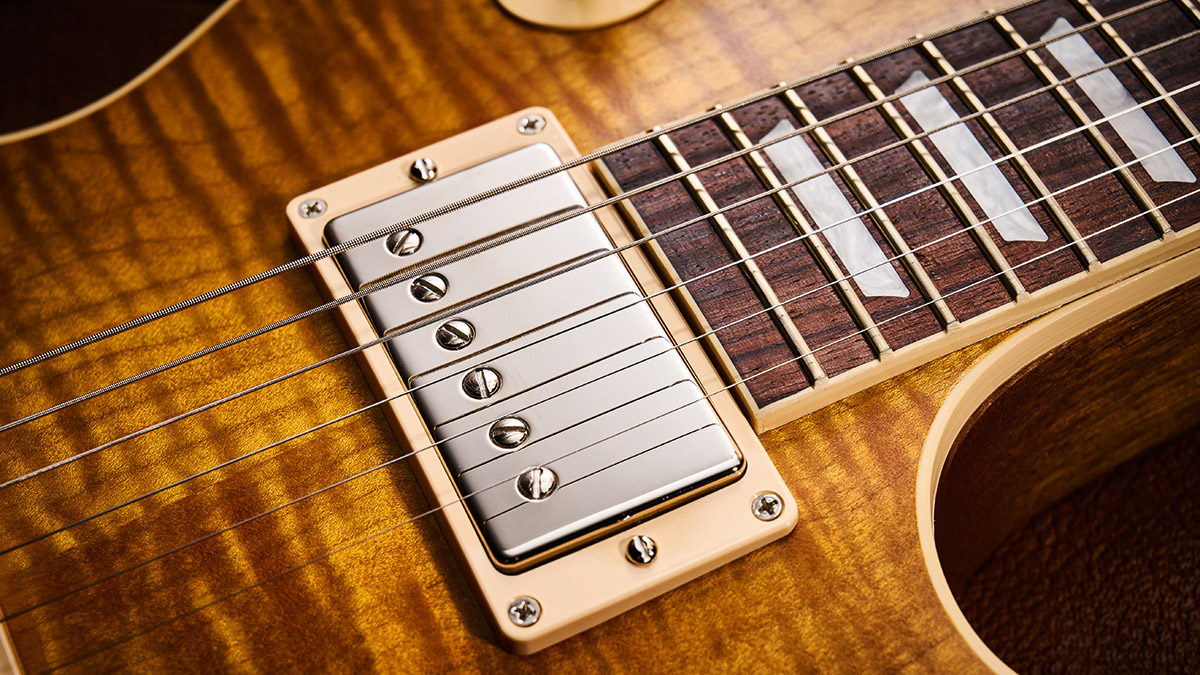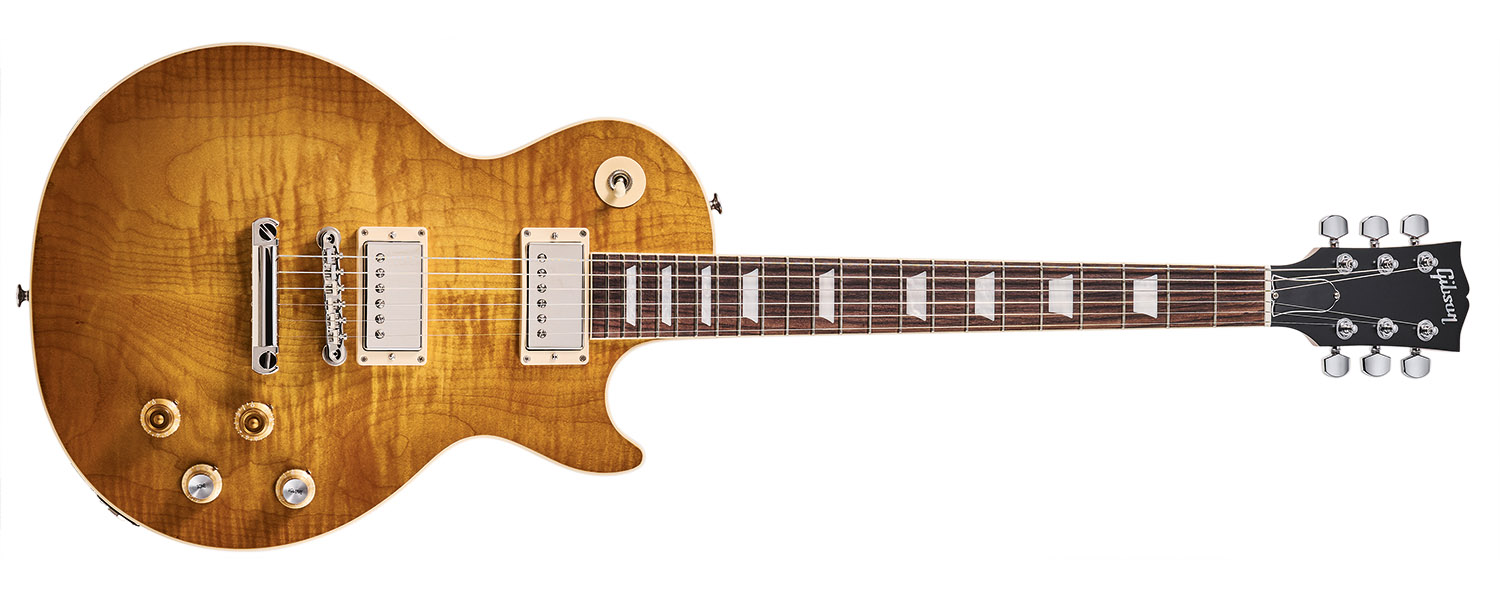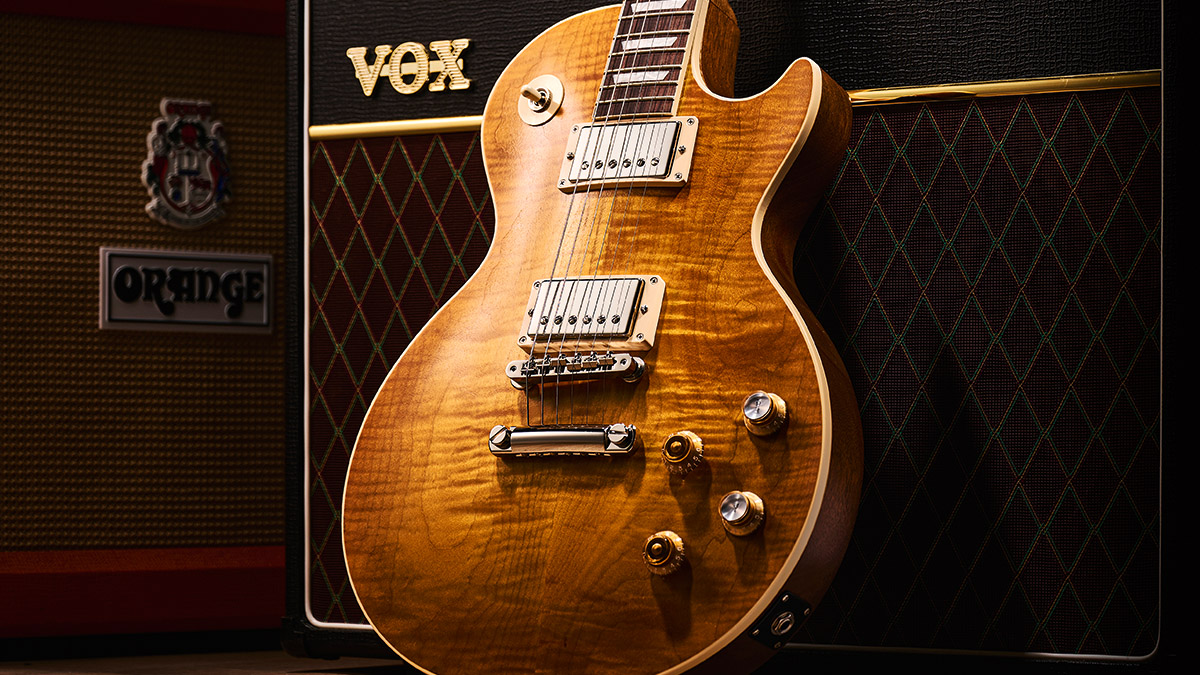Guitar World Verdict
This versatile Les Paul is raw power personified, and while you are stuck with that out-of-phase middle position, it provides another texture that might prove as useful tracking parts on a recording as chasing Greeny’s tone.
Pros
- +
Workhorse Les Paul vibe with thin satin finish.
- +
Crisp, clean build.
- +
Good weight.
- +
Powerful PAF voice.
- +
Musical out-of-phase sounds.
Cons
- -
The magnet flip means you can’t put the pickups in phase. Sharp binding edges.
- -
Quite an uplift in price from the standard Faded model.
You can trust Guitar World
Few guitars come with such a historic and evocative backstory as the Greeny Les Paul. Pretty much whatever your age or taste in music, at least one if not all of the players involved – Peter Green, Gary Moore and Kirk Hammett, oh, and let’s not forget Les Paul himself – will be on your playlist. The appeal, the blanket publicity and the social media buzz mean that this guitar is a more than significant introduction. But what do we actually get for $3k?
It seems like a modded Gibson Les Paul Standard ’50s, the cornerstone of the Original Series, which has remained unchanged since its introduction, under new ownership, in late 2019. But thanks to its satin nitro finish, it’s actually based on the Faded version that appeared last year.
As for the pimps to its starting point, first off, we get a maple top upgrade from AA to AAA. Then, reflecting the neck repairs of the original Greeny model, the headstock is left plain with no ‘Les Paul Model’ script or any truss rod cover ID.
The toggle switch ring is left plain, too, and the control knobs differ, a Gary Moore mod we believe: the bridge pickup’s pair has the gold top-hat knobs with silver reflectors of the current ’60s models, while the neck pickup has the standard gold top-hat knobs of the ’50s Standards.
The Greeny Burst finish is a slightly deeper-hued version of the Faded’s Vintage Honey Burst and is applied just to the top; the rest is a mid-brown stain over the slightly open‑pore feel of the lighter coloured mahogany. We also get Grover Rotomatic tuners with ‘contemporary’ Schaller-like knobs, not the vintage Kluson style of the current ’50s guitars.
Onto pickups and the spec of the Custom Shop Greeny tells us it uses “Custom Greeny Buckers with Alnico II magnets”, while the USA model’s spec just calls them “Greenybuckers”. On both, the bar magnet of the neck pickup is flipped, its polarity reversed, so when both pickups are on together they’re out of phase.
Also, the neck pickup is physically reversed so the screw poles face the bridge, which really shouldn’t make too much of a difference, even if the pickup coils are slightly unmatched like the Burstbuckers, for example – and these appear to be wax-potted.
Feel & Sounds
Our advice is to forget the backstory and just enjoy the guitar. It’s a cracker. There’s no weight relief and the guitar weighs a good-for-the-style 4kg (8.8lbs), just slightly heavier than the previous Faded 50s we reviewed.
The neck is very slightly narrower than that 50s Faded, too: 42.3mm at the nut and 52.4mm by the 12th but identical in depth, with a 1st fret measurement of 22mm and 24.8mm by the 12th. The shape is a pretty classic C, although this one actually feels very subtly asymmetrical with slightly less shoulder on the treble side.

As before, though, there are a lot of sharp edges, especially to the top edge of the body binding, and you can feel a slight line on the edge of the neck where it meets the binding, the same on the body. It’s not a dealbreaker, but it does give a rather unfinished feel to a $3k guitar – and with everything else being so ship-shape, we can’t help but ask why?
Plugged in, Greeny is noticeably hotter than our reference Les Paul Classic with its retrofitted Burstbucker 1 and 2 – a little thicker, creamier, less polite. With both volumes full up, it sounds more Gary Moore than Peter Green, and when we select both pickups the sound drops in volume with its expected out-of-phase nasally, thinner voice.
However, reducing either of the volumes a little creates a slightly out-of-phase sound that’s a lot more useful for most: fuller but still with a little honk. Unlike the current Les Paul Classic, which has a pull-switch to engage a conventional out-of-phase sound if you want it, the magnet flip here means you don’t have a choice.
Verdict
Is this USA Greeny a good Les Paul? Yes, and it’s one that would’ve been just as good copping Slash or the Pistols’ Steve Jones as it is with more nuanced styles of Mr Green.
Specs

- PRICE: $3,199 / £2,999 (inc case)
- ORIGIN: USA
- TYPE: Single-cutaway, solidbody electric
- BODY: 2-piece mahogany with carved AAA figured maple top
- NECK: 1-piece mahogany, ’50s Vintage profile, glued-in
- SCALE LENGTH: 624mm (24.6”)
- NUT/WIDTH: Graph Tech/42.3mm
- FINGERBOARD: Single-bound rosewood, acrylic trapezoid inlays, 305mm (12”) radius
- FRETS: 22, medium jumbo
- HARDWARE: ABR-1 tune-o-matic bridge, aluminium stopbar tailpiece, Grover Rotomatic tuners w/ contemporary buttons – nickel-plated
- STRING SPACING, BRIDGE: 51.5mm
- ELECTRICS: Covered Gibson Greenybucker w/reversed magnet polarity (neck) and Greenybucker (bridge), 3-way toggle pickup selector switch, volume and tone for each pickup
- WEIGHT (kg/lb): 4.01/8.8
- OPTIONS: None
- RANGE OPTIONS: The Gibson Custom Kirk Hammett ‘Greeny’ 1959 Les Paul Standard costs £18,699. The USA Les Paul Standard 50s Faded costs £2,299; the glossed version that includes Goldtop, Figured and Plain tops, with and without P-90s, is priced from £2,799
- LEFT-HANDERS: No
- FINISHES: Greeny Burst (as reviewed) – satin nitrocellulose
- CONTACT: Gibson

Dave Burrluck is one of the world’s most experienced guitar journalists, who started writing back in the '80s for International Musician and Recording World, co-founded The Guitar Magazine and has been the Gear Reviews Editor of Guitarist magazine for the past two decades. Along the way, Dave has been the sole author of The PRS Guitar Book and The Player's Guide to Guitar Maintenance as well as contributing to numerous other books on the electric guitar. Dave is an active gigging and recording musician and still finds time to make, repair and mod guitars, not least for Guitarist’s The Mod Squad.
“It holds its own purely as a playable guitar. It’s really cool for the traveling musician – you can bring it on a flight and it fits beneath the seat”: Why Steve Stevens put his name to a foldable guitar
“Finely tuned instruments with effortless playability and one of the best vibratos there is”: PRS Standard 24 Satin and S2 Standard 24 Satin review












